This photograph of refugees on the road from Guernica was taken by Norman Ramsey of South Shields shortly after the city was bombed on April 26th 1937. He had arrived on the Newcastle steamer Hamsterley, which had docked in Bilbao three days earlier with a cargo of food for the starving Basque population.
The bombing of the ancient city of Guernica was carried out by German aircraft in support of the Nationalist leader General Franco during the Spanish Civil War (1936-39). The war began after the Nationalists launched violent assaults to overthrow the democratically elected Republican government.
Norman Ramsey also photographed the ruins of the centre of Guernica. His pictures were published in the North Mail and Newcastle Chronicle after he returned to Newcastle in May.
Guernica was a purely civilian target, and people in Europe and America were horrified to read the account by the journalist George Steer published in The Times and The New York Times immediately after the attack:
At 2 a.m. today when I visited the town the whole of it was a horrible sight, flaming from end to end. The reflections of the flames could be seen in the clouds of smoke above the mountains from 10 miles away. Throughout the night houses were falling until the streets became long heaps of red impenetrable debris… many [people] were forced to remain round the burning town lying on mattresses, or looking for lost relatives or children.
Guernica is only 35 kilometres from the port of Bilbao where the Hamsterley and two other British food ships were docked. The Basque authorities took the opportunity to show the British crews the devastation. The master of the Hamsterley, Captain A. H. Still, of Swalwell, described the ship’s arrival at Bilbao and the trip to Guernica in the North Mail:
As the report mentions, Bilbao was also being bombed, and it was dangerous work for the seamen. The Basque people were overjoyed to see them, as one of the crew of the Hamsterley described (the newspaper report, written after the ship’s return to Newcastle in May, also mentions their next trip to Bilbao):
Franco’s Nationalists controlled the main Spanish food-producing regions of Galicia and Castile. The food shortage was acute in the Republican Basque region, which had been cut off for a considerable time.
To reach Bilbao, the Hamsterley had to run the Nationalist blockade, which was imposed on March 31st. This was followed up by Nationalist threats to sink British ships approaching Republican-held ports.
The Hamsterley was at the head of a small convoy of three British food ships which docked at Bilbao on April 23rd (this is what the North Mail may have meant by describing the ship as the first – in actuality, two other British ships had got through the blockade earlier).
The anonymous South Shields seaman gave the North Mail a dramatic account of how the British flagship Hood and the destroyer Firedrake went into action to protect the convoy against the Nationalist cruiser Almirante Cervera and the armed trawler Galerna:
…the Almirante Cervera … signalled to us to stop. When we failed to do so, she showed her disapproval by sending a shell across our bows. … Firedrake darted in between us and the Nationalist cruiser.… We carried on again towards Bilbao and were at the head of the convoy when another shell burst in the sea. … Firedrake swung out her torpedo tubes and Hood cleared her decks for action. Her mighty guns looked terrifying. Firedrake signalled to the trawler Galerna that she must not meddle with British ships… The trawler tried to get in between us and the three-mile limit [international waters start 3 miles from the coast] but Firedrake headed her off until we had passed inside the limit. Then the Galerna tried to reach us again, but the shore batteries at Bilbao opened fire…
The South Shields seaman whose words were reported by the North Mail may have been Norman Ramsey, who took the Guernica photographs reproduced at the top of the blog. In 1924, Ramsey was recorded as having a butcher’s shop in South Shields, but subsequently seems to have changed jobs. When asked by the North Mail, his wife confirmed that he was working as a sailor on the Hamsterley on this voyage. The enquiry was prompted by a ‘mystery’ over a statement that her husband apparently made when the Hamsterley and the other two British ships were waiting at the French Basque port of St Jean de Luz to see if it would be possible to run the blockade. The North Mail reported on April 23rd:
The Newcastle managers of the ship [Hamsterley], which is owned by the Hartley Steamship Company, denied yesterday that Mr. Norman Leathley Ramsey, of South Shields, who is now with the ship, was their representative. Mr. Ramsey, who had been described as representative of the owners, was reported to have said yesterday that he was willing to run the blockade of the Basque Coast if the Basque Government would guarantee the value of the ship – £40,000.
On the return trip from Bilbao, the Hamsterley had to run the blockade for a second time, as Captain Still told the North Mail:
On its next voyage to Bilbao in May, carrying coal, the Hamsterley took part in evacuating refugees to French ports, along with the Newcastle steamer Backworth (described in a future blog). Like other North East ships trading with Bilbao, the Hamsterley brought back iron ore, arriving with its cargo at Tyne Dock.
The destruction of Guernica swung a lot of public opinion in Britain towards the Republican cause. In addition, many British artists were very affected by the powerful imagery Picasso created in response to the tragedy; his Guernica paintings were exhibited in Britain in 1938 in support of the Republicans. One of these iconic pictures, Weeping Woman, is on show alongside paintings and sculpture by British artists in the exhibition Conscience and Conflict, which is at the Laing Art Gallery until June 7th. There are previous exhibition blogs here and here.
*******************************************
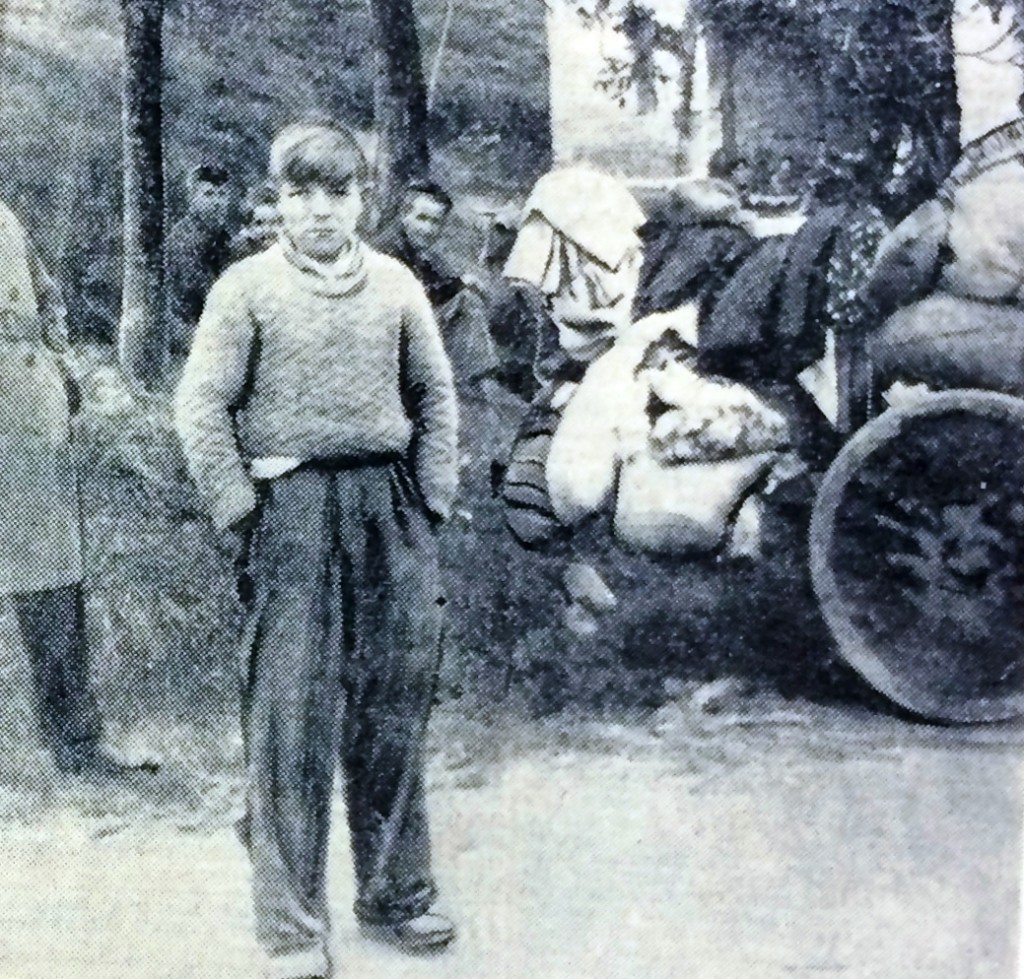
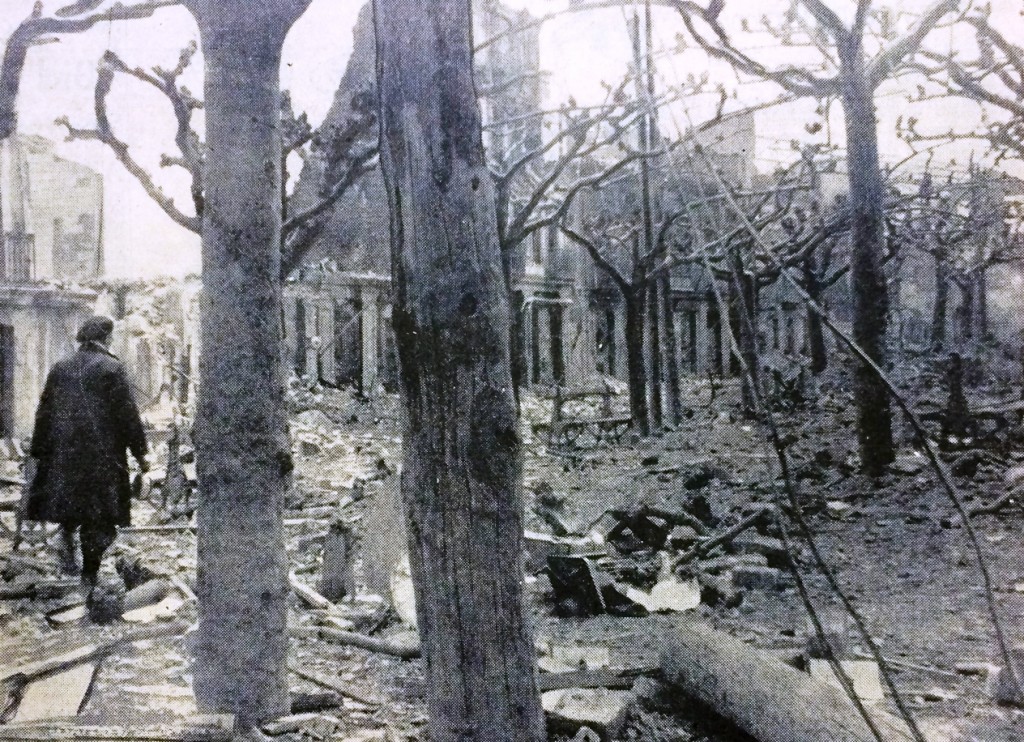
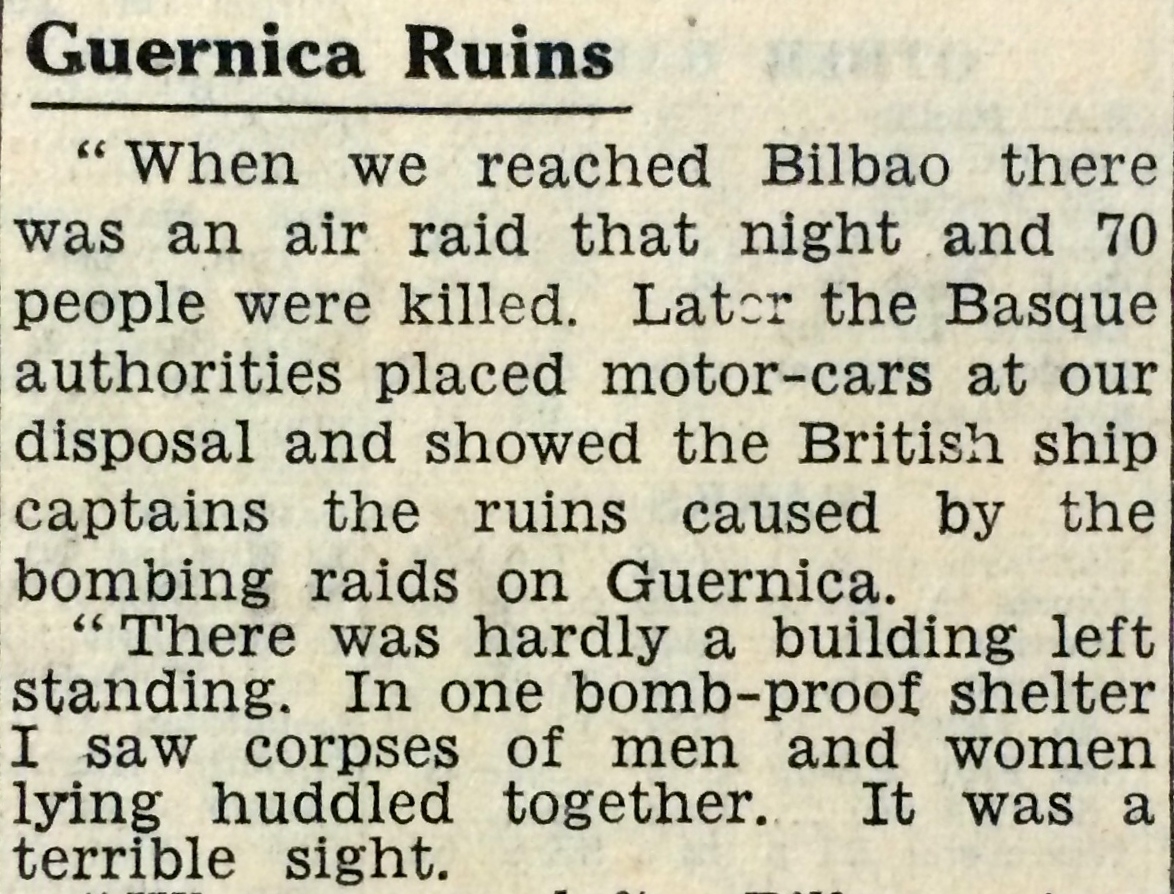
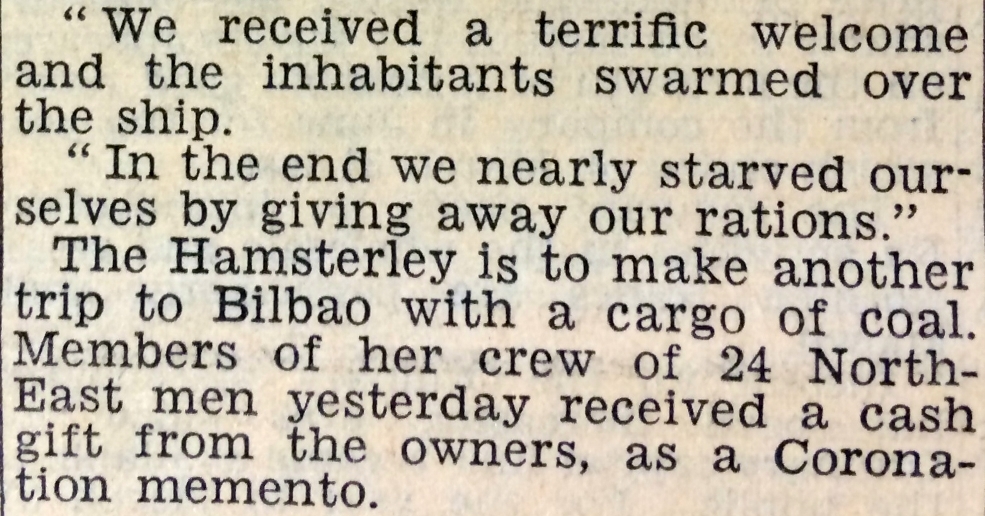
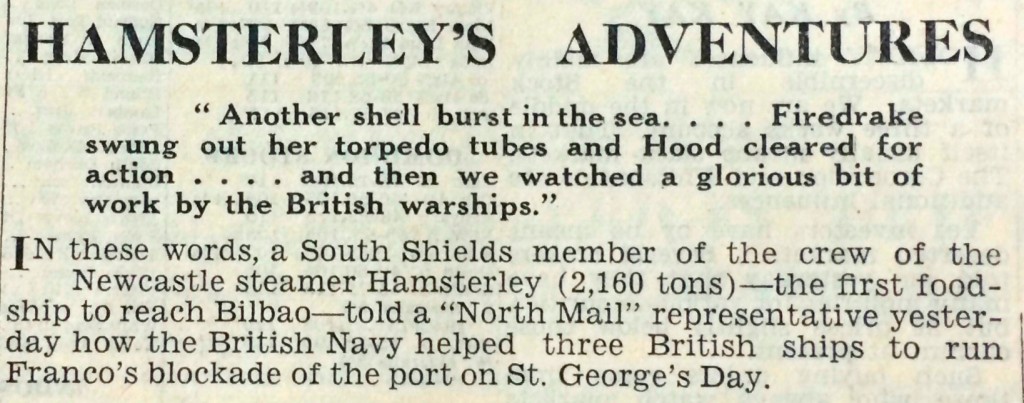
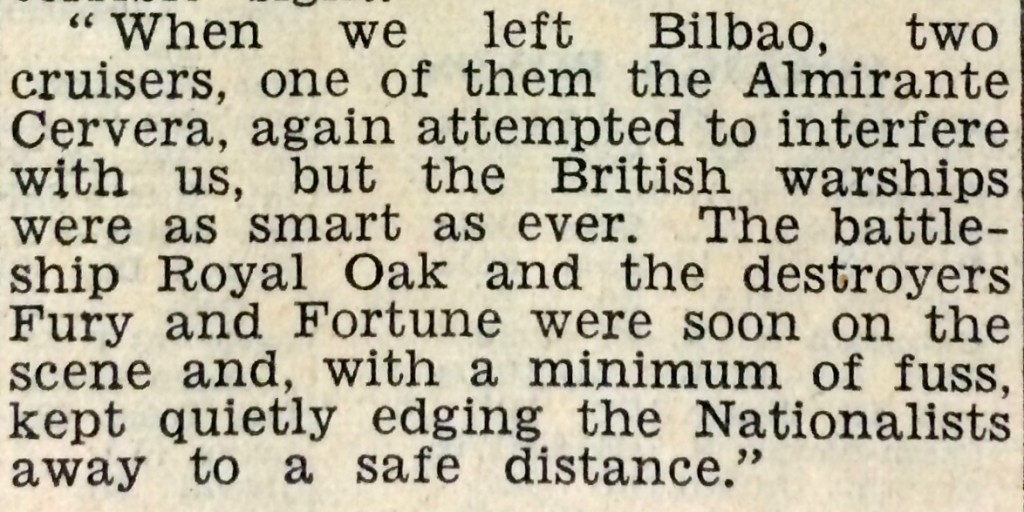
One Response to Newcastle foodship crew witness the devastation of Guernica bombing in the Spanish Civil War